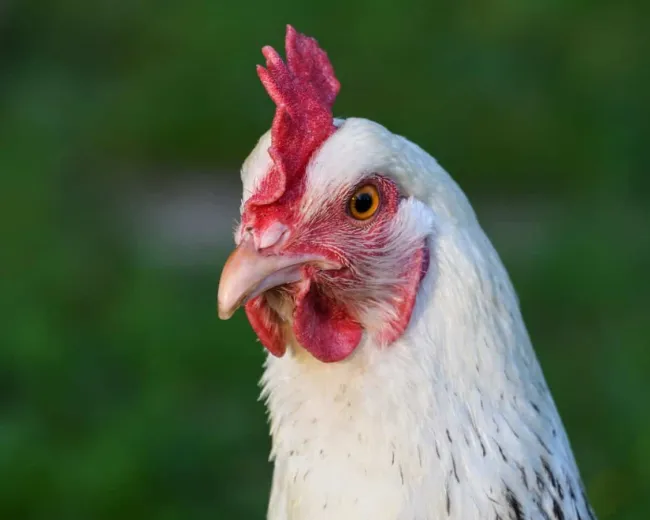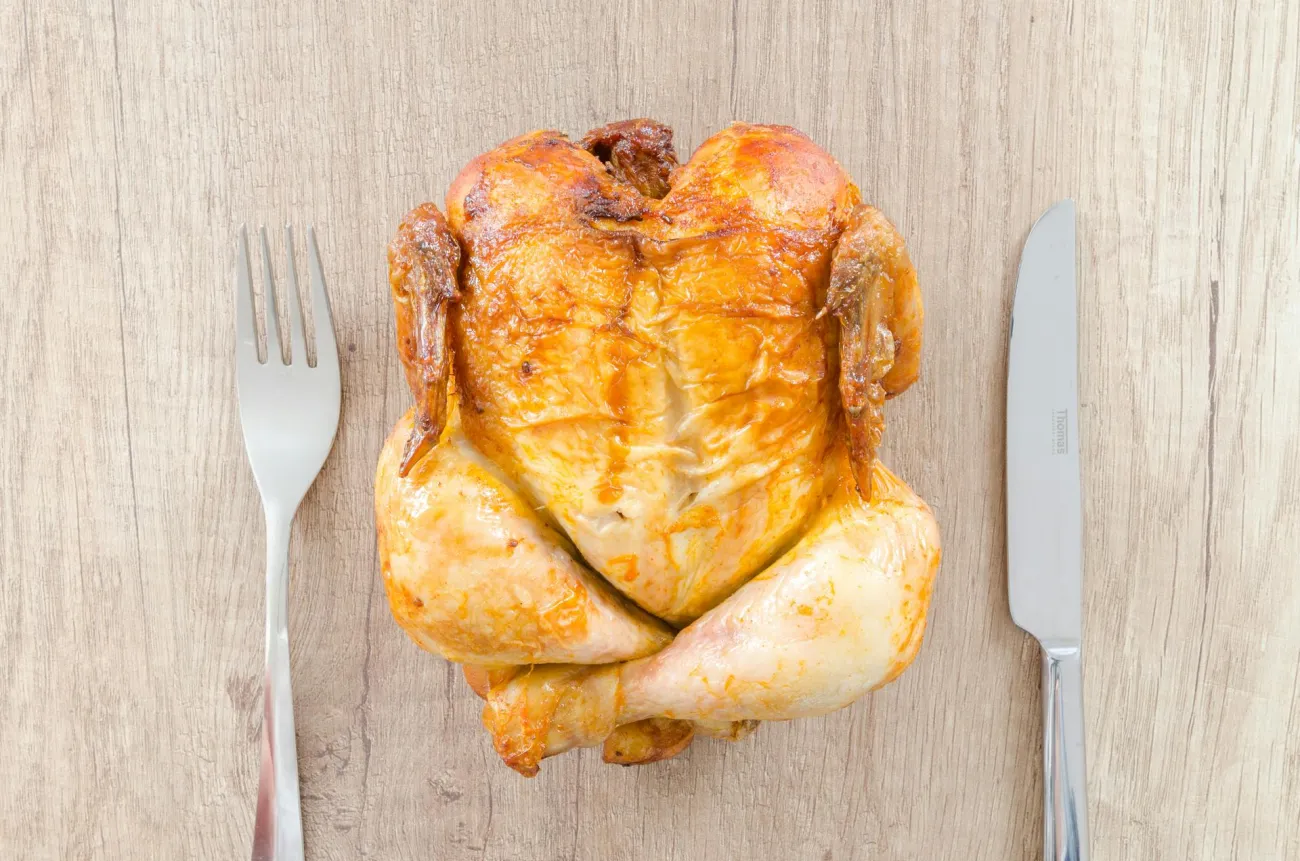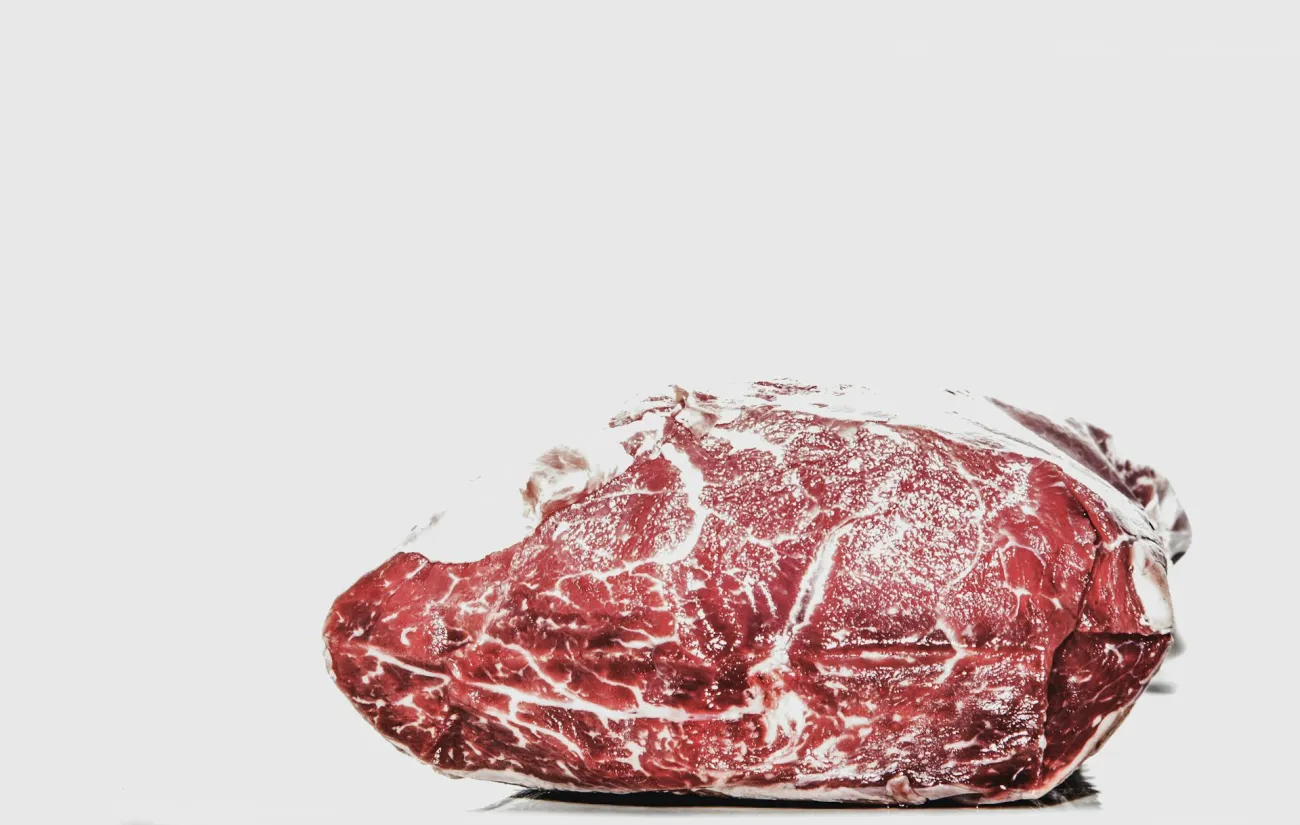This paper traces mass, energy flows and emissions in the beef, poultry and pork supply chains in Germany (including all emissions from the animal production stages, and emissions from energy use at subsequent stages). It outlines the potential of different strategies to reduce consumption-based emissions. It finds that the greatest emissions reductions could come from dietary change, i.e. replacing some meat consumption with consumption of soybeans and nuts, or replacing some meat consumption with offal consumption.

The results show that pork accounts for the largest share of German meat consumption (58%), followed by poultry (29%) and beef (13%), not accounting for other meat types.
The figure below shows the calculated energy balance in the German meat supply chain. Compared to the energy content of animal feed (5.6 x 105 TJ, left-hand side of figure below):
- The energy content of the live animals entering the slaughter stage, including imported animals, is 9.0 x 104 TJ (16% of the energy content of animal feed, M1 in the figure below).
- The energy content of meat products entering the market (including imported meat and meat destined for export) is 1.8 x 104 TJ (3.2% of the energy content of animal feed, M2 in the figure below). This is so low partly because of the significant energy content of byproducts from the slaughter and processing stages.
- The energy content of meat consumed is 7.6 x 103 TJ (1.4% of the energy content of animal feed).
For comparison, see this diagram for calorie retention for different meat types calculated in the paper Feed conversion efficiency in aquaculture: do we measure it correctly? See also caloric efficiencies calculated by the paper Energy and protein feed-to-food conversion efficiencies in the US and potential food security gains from dietary changes.
 Image: Figure S2, Xue et al. Energy balance for the German meat supply chain (beef, pork, and poultry combined) in 2016. P1: Animal production, P2: Slaughtering, P3: Processing, P4: Retailing, P5: Consumption, M1: Live animals trade market, M2: Meat products trade market. PE: Process energy. TEU: Thermal energy use. Imp.: Import. Exp.: Export.
Image: Figure S2, Xue et al. Energy balance for the German meat supply chain (beef, pork, and poultry combined) in 2016. P1: Animal production, P2: Slaughtering, P3: Processing, P4: Retailing, P5: Consumption, M1: Live animals trade market, M2: Meat products trade market. PE: Process energy. TEU: Thermal energy use. Imp.: Import. Exp.: Export.
The paper assesses potential reductions in total greenhouse gas emissions of the German meat supply chain, relative to 2016 emissions on a consumption basis. Some of the largest potential reductions are:
- Reducing meat consumption by 50% (and replacing that portion of meat consumption with soybeans and nuts) could reduce emissions by 32%.
- Shifting to a diet higher in offal (and consequently discarding less offal - the paper notes that some offal is currently discarded due to low demand for it as food - see Table S17 for further details) could reduce emissions by 14%.
- Reducing the emissions intensity of production (e.g. by changing manure management or using energy saving equipment) could reduce emissions by 13%.
- Reducing retail and consumption waste could reduce emissions by 10%.
- Replacing 25% of beef consumption with pork and poultry consumption could reduce emissions by 7%.
Abstract
Meat production and consumption contribute significantly to environmental impacts such as greenhouse gas (GHG) emissions. These emissions can be reduced via various strategies ranging from production efficiency improvement to process optimization, food waste reduction, trade pattern change, and diet structure change. On the basis of a material flow analysis approach, we mapped the dry matter mass and energy balance of the meat (including beef, pork, and poultry) supply chain in Germany and discussed the emission reduction potential of different mitigation strategies in an integrated and mass-balance consistent framework. Our results reaffirmed the low energy conversion efficiency of the meat supply chain (among which beef was the least efficient) and the high GHG emissions at the meat production stage. While diet structure change (either reducing the meat consumption or substituting meat by edible offal) showed the highest emissions reduction potential, eliminating meat waste in retailing and consumption and byproducts generation in slaughtering and processing were found to have profound effect on emissions reduction as well. The rendering of meat byproducts and waste treatment were modeled in detail, adding up to a net environmental benefit of about 5% of the entire supply chain GHG emissions. The combined effects based on assumed high levels of changes of important mitigation strategies, in a rank order considering the level of difficulty of implementation, showed that the total emission could be reduced by 43% comparing to the current level, implying a tremendous opportunity for sustainably feeding the planet by 2050.
Reference
Xue, L., Prass, N., Gollnow, S., Davis, J., Scherhaufer, S., Östergren, K., Cheng, S. and Liu, G. (2019). Efficiency and Carbon Footprint of the German Meat Supply Chain. Environmental Science & Technology, Article ASAP.
Read the full paper here. See also the Foodsource resource Which diets generate fewer GHG emissions and other environmental impacts? and the FCRN report Lean, green, mean, obscene…? What is efficiency? And is it sustainable?




Comments (0)